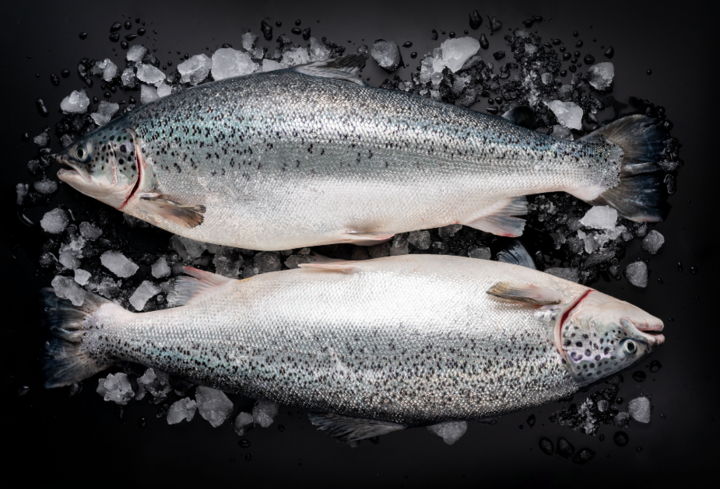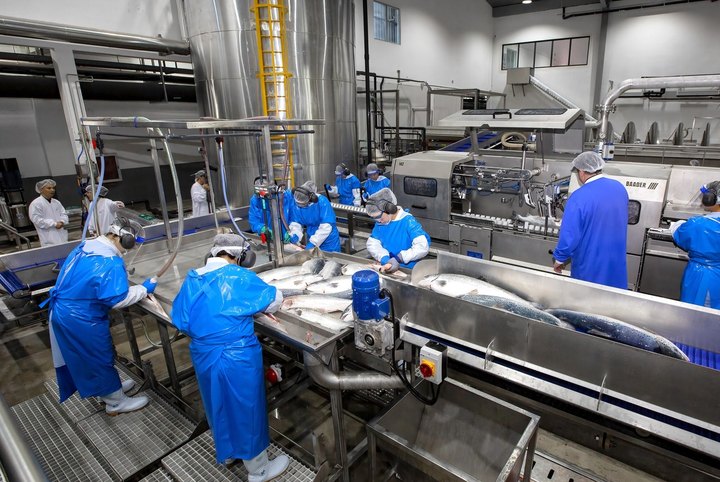Norwegian salmon immigrated to Zhejiang, the first batch of Zhejiang salmon
Norwegian salmon scientific name Atlantic salmon, it is a kind of sea salmon, our daily consumption, basically imported from Norway and other countries.
There is also a fresh water salmon, which is farmed in Qinghai, Xinjiang, Yunnan, Guizhou and other places, and its scientific name is rainbow trout, which tastes drier and harder than Atlantic salmon and sells much cheaper.

Zhejiang salmon (Atlantic salmon) respondents to the picture
Recently, the tide news reporter learned from the Marine Economy Department of Zhejiang Province that the East China Sea has more and more mouthwatering food, and Norwegian salmon has been locally cultured in Xiangshan, Ningbo.
These two days, Asias first land-based salmon farming project using RAS (recirculating aquaculture) technology - Nordic (China) salmon RAS land-based farming base, the first batch of Zhejiang salmon harvest, began to market.
Automatic fish delivery 24 hours, the first shipment to Shanghai
In Gaotang, the hometown of red beauty in Xiangshan, Ningbo, the North European (Chinese) salmon RAS land-based farm, groups of Atlantic salmon swim in groups, and the water surface ripples.
"Two days ago, we shipped the first batch of salmon in small quantities to the Shanghai market, customer feedback, fresher than imported taste, and then through distributors, supply Zhejiang market," said the person in charge of Notic Aquatic Products (Ningbo) Co., LTD.
The person in charge introduced that the Atlantic salmon in the farm is of pure blood, and the eggs come from Iceland, each batch has a genetic certificate to ensure the purity of the variety, and the farming process is green and healthy, without adding fish drugs and antibiotics.

Zhejiang Ningbo Xiangshan circulating water land-based aquaculture salmon base survey
The breeding technology and management experience of the base are from Norway, and the circulating water for breeding is taken from the East China Sea, after purification to meet the standards of salmon farming, there is further cooling treatment, adjusted to the water temperature of about 13℃ for the growth of cold-water fish Atlantic salmon, and the fully enclosed land-based culture is carried out.
At the same time, the sales of salmon in the base are fully harvested and slaughtered according to orders, and the automatic fish killing production line is implemented, which is also the first automatic slaughter line for Atlantic salmon in China. After slaughter, the salmon will be sent to all parts of the country within 24 hours to maximize the freshness of the product, and the fastest time for imported salmon to go through customs in Hong Kong is 3-4 days.
At present, the wholesale price of imported salmon in the Chinese market is basically 120-150 yuan/kg, and the main reason for the high price of salmon is the high cost of breeding, especially the cost of feed.
In addition, 99% of the salmon we eat on the market is farmed, because wild salmon is low in fat content, the taste is wood, and the quality is very different from farmed salmon.
After two years of cultivation, the average weight of the first batch of Atlantic salmon at the base is now 5 kilograms, which meets the specifications for market sale, and the base has entered stable production, and the weekly supply can reach 70 tons, and the production is expected to reach 3000-3500 tons this year.
Chinas annual consumption of 90,000 tons, the future will no longer rely on pure imports
Norway is the world leader in Atlantic salmon farming, having started in the 1960s, and is now the worlds largest producer and exporter of salmon.
Salmon is the largest mariculture species in Norway. In Norway, Atlantic fresh fish farming is a typical example of land and sea relay industrial production. The stage from parental spawning to standard seed cultivation is mainly completed in the land-based factory breeding workshop by circulating water, and then transferred to the Marine farm for cultivation by using deep-water cages.
According to Chinese customs data, China imported more than 93,000 tons of Atlantic salmon in the whole of 2023, an increase of 46 percent from the previous year. Among them, in 2023, Chinas imports of chilled Atlantic salmon grew strongly, achieving more than 80,000 tons of imports, an increase of 63%.
In the past year, China imported a total of 39,400 tons of chilled salmon from Norway, Norways origin in Chinas imported chilled Atlantic salmon source, for many consecutive years ranked first, in 2023, Norways proportion of production continued to increase to 49%. This also means that nearly half of every two pieces of sashimi salmon in the Chinese market may come from Norway in northern Europe.
In recent years, China has made some achievements in the technical equipment of Atlantic salmon culture, such as Shenlan No. 1, Zhenyu No. 1, Guoxin No. 1, Puwang No. 1 and a number of large deep-sea cage culture equipment have been put into use.

Chinas first automatic slaughter line for Atlantic salmon
However, deep-sea cage aquaculture also has the impact of fish escape, sea water environment and other adverse factors. From the perspective of production mode, if the whole circulating water land-based aquaculture can be realized in Chinese waters, it should be a more ideal choice.
The annual output of the Northern European Aquatic Park salmon project is 20,000 tons, which is implemented in three phases, of which the Chinese investment is 1.5 billion yuan, the foreign investment is 1.5 billion yuan, and the long-term planned annual output is 50,000 tons, which is currently the largest domestic agricultural project to introduce foreign investment.
The local breeding of Atlantic salmon in Zhejiang will effectively solve the situation of relying on imports, alleviate the high market price of imported salmon, lack of freshness and other problems, and circulating aquaculture is also a major direction of sustainable development of aquaculture.
News Source: Tide News
Reporter: Shi Wen
Correspondent: Hu Wei and Jin Xiaowei

